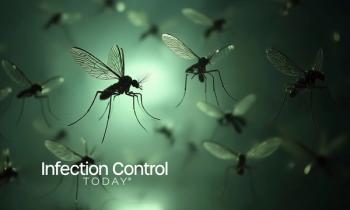
Discovery Could Help Stop Malaria at its Source the Mosquito
As summer temperatures cool in the United States, fewer mosquitoes whir around our tiki torches. But mosquitoes swarming around nearly 40 percent of the worlds population will continue to spread a deadly parasitic disease malaria. Now an interdisciplinary team led by researchers from Rensselaer Polytechnic Institute has found a key link that causes malarial infection in both humans and mosquitoes.
If this link in the chain of infection can be broken at its source the mosquito then the spread of malaria could be stopped without any man, woman, or child needing to a take a drug. The researchers discovery will be published in the Aug. 31 edition of the Journal of Biological Chemistry.
The team found that humans and the mosquitoes that carry the malaria parasite share the same complex carbohydrate, heparan sulfate. In both humans and mosquitoes, heparan sulfate is a receptor for the malaria parasite, binding to the parasite and giving it quick and easy transport through the body. The team was led by Robert J. Linhardt, professor of biocatalysis and metabolic engineering at Rensselaer.
The discovery allows us to think differently about preventing the disease, Linhardt said. If we can stop heparan sulfate from binding to the parasite in mosquitoes, we will not just be treating the disease, we will be stopping its spread completely.
Malaria parasites are extremely finicky about their hosts, Linhardt explained. Birds, rodents, humans, and primates all can be infected with malaria, but each species is infected by a different species of mosquito and each of those mosquitoes is infected by a different malaria parasite. In other words, there needs to be a perfect match at the molecular basis for malaria to spread from one species to another, Linhardt said. Researchers have long understood this deadly partnership, but the molecular basis for the match had never been determined.
The discovery marks a paradigm shift in stopping malaria, Linhardt said Now, we can work to develop an environmentally safe, inexpensive way to block infection in mosquitoes and not have to worry about drug side effects in humans.
Malaria kills over one million people around the world, mostly young children. And the problem is growing, Linhardt noted. As the Earth heats up due to global warming, outbreaks of malaria are being reported higher up the coast of South America and Mexico each year, he said.
Unfortunately, there is little direct funding on malaria in this country outside of the Bill and Melinda Gates Foundation, because it is not considered a major threat in this country, Linhardt noted. We do our research on a shoestring. Malaria research funding needs to move higher up on the scientific priority list.
Linhardt and his collaborators were the first to discover the link between the spread of malaria in humans and heparan sulfate in 2003. Those findings were also published in the Journal of Biological Chemistry. In this earlier study, Linhardt compared the receptors in the liver of humans to those of rodents. The liver is the first organ to be infected by the malaria parasite in mammals. The researchers found that heparan sulfate in the human liver was the unwitting transporter of the disease to the human bloodstream. The receptor found in rodents was a different heparan sulfate.
The next step for Linhardt, outlined in the current research, was to determine if heparan sulfate was also present in the species of mosquito known to spread malaria to humans, Anopheles stephensi. To make this key link, Linhardt and his current research team, which includes Rensselaer doctoral students Melissa Kemp and Jin Xie, enlisted the help of New York University physician and entomologist Photini Sinnis. Sinnis and her team at NYU provided their entomological expertise and the ill-fated mosquitoes needed for the experiments.
After finding heparan sulfate in mashed mosquitoes, the researchers needed to determine if heparan sulfate was in the mosquito organs known to host the malaria parasite. If so, it was likely that heparan sulfate was the reason malaria spreads from mosquito to human and human to mosquito.
In mosquitoes, the malaria parasite infects the digestive tract. A mosquito bites a human who carries the malaria parasite in his or her bloodstream. The parasites move into the bugs gut and then to their salivary glands, allowing the mosquito to infect another human during its next blood meal. To isolate a two-microgram salivary gland and the four-microgram digestive tract from each mosquito required the extreme skill of Sinnis and her team, which included Alida Coppi. Once isolated, the guts and glands were analyzed by internationally renowned microanalysts Toshihiko Toida, Hidenao Toyoda, and Akiko Kinoshita-Toyoda at Chiba University in Japan. Heparan sulfate was found in both mosquito organs.
As a final step, the Rensselaer team proved that the heparan sulfate in the mosquito bound to the same malaria parasite that heparan sulfate found in the human liver did. It was an unfortunate perfect match.
Source: Rensselaer Polytechnic Institute Â
Â
Newsletter
Stay prepared and protected with Infection Control Today's newsletter, delivering essential updates, best practices, and expert insights for infection preventionists.





